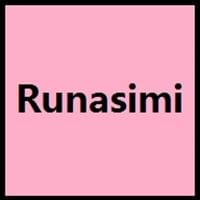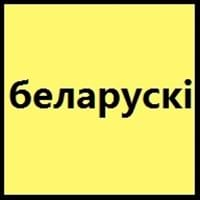Quechua vs Belarusian
Countries
Argentina, Bolivia, Chile, Colombia, Ecuador, Peru
Belarus, Poland
National Language
Bolivia, Ecuador, Peru
Belarus, Gambia
Second Language
Not spoken in any of the countries
Poland
Speaking Continents
South America
Asia
Minority Language
Not spoken in any of the countries
Czech Republic, Lithuania, Ukraine
Regulated By
Not Available
National Academy of Sciences of Belarus, National Languages Committee
Interesting Facts
- One of the most widely spoken indigenous language in the America is Quechua.
- Quechua language has borrowed many words from Spanish.
- Since 1918, Belarusian has been the official language of Belarus.
- Belarusian include many loanwords from Polish language.
Similar To
Not Available
Russian and Ukrainian
Derived From
Not Available
Not Available
Alphabets in
Quechua-Alphabets.jpg#200
Belarusian-Alphabets.jpg#200
Writing Direction
Not Available
Not Available
Time Taken to Learn
Not Available
Hello
Rimaykullayki
dobry dzień
Thank You
Solpayki
Dziakuj
How Are You?
Allillanchu
Jak vy ?
Good Night
Allin tuta
Dabranač
Good Evening
Wuynas nuchis
Dobry viečar
Good Afternoon
Wuynas tardis
dobry dzień
Good Morning
Wuynus diyas
Dobraj ranicy
Please
Not Available
Kali laska
Sorry
Pampachaykuway
Vybačajcie
I Love You
Kuyayki
JA liubliu ciabie
Excuse Me
Pampachaway
Vybačajcie
Dialect 1
Ancash
North-Eastern Belarusian
Where They Speak
Peru
North-East Belarus
How Many People Speak
Not Available
Dialect 2
Huánuco
South-Western Belarusian
Where They Speak
Peru
South-West Belarus
How Many People Speak
Not Available
Dialect 3
Yaru
Middle Belarusian
Where They Speak
Peru
Middle Belarus
How Many People Speak
Not Available
Second Language Speakers
Not Available
Native Name
Qhichwa
Беларуская мова (Bielaruskaja mova)
Alternative Names
North La Paz Quechua
Belarusan, Belorussian, Bielorussian, Byelorussian, White Russian, White Ruthenian
French Name
quechua
biélorusse
German Name
Quechua-Sprache
Weißrussisch
Pronunciation
Not Available
Not Available
Ethnicity
Quechua
Belarusians
Origin
16th Century
18th century
Language Family
Quechumaran Family
Indo-European Family
Subgroup
Andean Equatorial
Slavic
Branch
Not Available
Eastern
Early Forms
No early forms
Old East Slavic
Standard Forms
Quechua
Belarusian
Language Position
Not Available
Signed Forms
Not Available
Not Available
Scope
Macrolanguage
Individual
ISO 639 6
Not Available
Not Available
Glottocode
quec1387
bela1254
Linguasphere
No data Available
53-AAA-eb < 53-AAA-e (varieties: 53-AAA-eba to 53-AAA-ebg)
Language Type
Living
Living
Language Linguistic Typology
Not Available
Not Available
Language Morphological Typology
Agglutinative, Synthetic
Not Available
Quechua and Belarusian Language History
Comparison of Quechua vs Belarusian language history gives us differences between origin of Quechua and Belarusian language. History of Quechua language states that this language originated in 16th Century whereas history of Belarusian language states that this language originated in 18th century. Family of the language also forms a part of history of that language. More on language families of these languages can be found out on Quechua and Belarusian Language History.
Quechua and Belarusian Greetings
People around the world use different languages to interact with each other. Even if we cannot communicate fluently in any language, it will always be beneficial to know about some of the common greetings or phrases from that language. This is where Quechua and Belarusian greetings helps you to understand basic phrases in Quechua and Belarusian language. Quechua word for "Hello" is Rimaykullayki or Belarusian word for "Thank You" is Dziakuj. Find more of such common Quechua Greetings and Belarusian Greetings. These greetings will help you to be more confident when conversing with natives that speak these languages.
Quechua vs Belarusian Difficulty
The Quechua vs Belarusian difficulty level basically depends on the number of Quechua Alphabets and Belarusian Alphabets. Also the number of vowels and consonants in the language plays an important role in deciding the difficulty level of that language. The important points to be considered when we compare Quechua and Belarusian are the origin, speaking countries, language family, different greetings, speaking population of these languages. Want to know in Quechua and Belarusian, which language is harder to learn? Time required to learn Quechua is 44 weeks while to learn Belarusian time required is Not Available.





